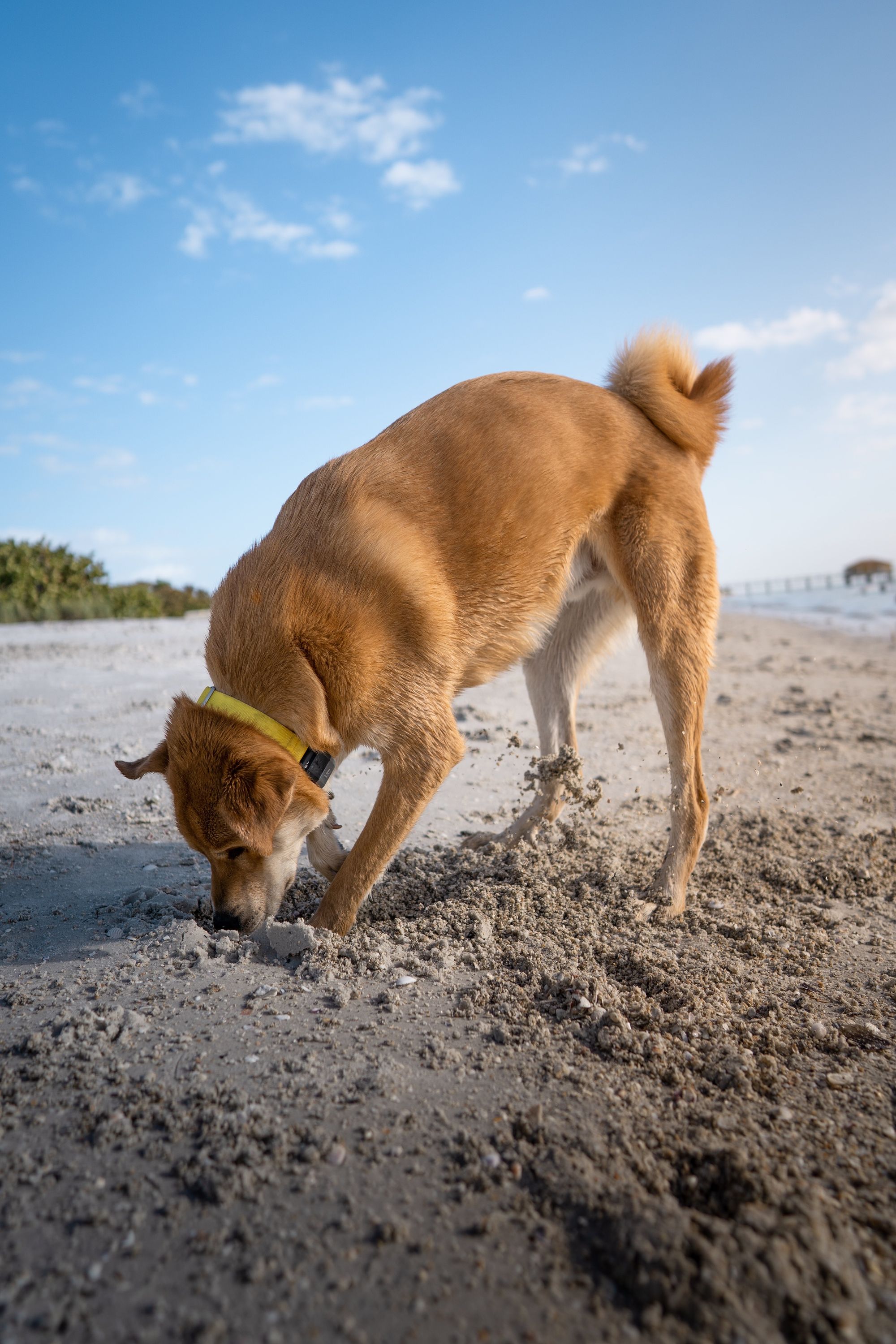Temperatures are dropping yet your pup is as energetic as ever. There comes a point when you might be unwilling to take your pup out for exercise but your furniture may be at risk if you don’t. Besides, the cold doesn’t seem to dampen your pup’s enthusiasm for a walk.
That raises a good question. With their furry coats, dogs don’t seem to be as affected by the cold as we are. But common sense tells us that it can eventually be too cold for them or that you should limit their time outside.
But how cold is too cold? How much time should you give them outside to burn off that extra energy? Let’s take a look.

How Cold Is Too Cold for Your Dog?
Dogs come in all shapes and sizes so there isn’t a one-size-fits-all answer to this question. There are various factors affecting your dog’s cold tolerance including breed, age, health, etc.
In general, a healthy medium or large dog can safely enjoy a 30-minute walk in temperatures down to 20 degrees fahrenheit. Smaller dogs generally can’t handle the cold as well. For temperatures below freezing but above 20 degrees, limit your walks to 15 or 20 minutes.
Once the temperature falls below 0 degrees, start thinking about ways to keep your pup active indoors. It’s too cold for them to be outside.
Factors Affecting Your Dog’s Cold Tolerance
Now let’s break this down a little further. Most people can safely follow the general guidelines listed above but every dog is different. Some dogs can handle far colder temperatures than others so you’ll want to keep an eye on your dog and figure out what they can tolerate.
Here are some factors to consider.
Breed
A big fluffy Malamute or St. Bernard will be able to handle far colder temperatures than a little Chihuahua. A bigger dog’s size helps them stay warmer, plus all that extra hair helps keep them warm.
When determining your dog’s cold tolerance, consider their size and the length of their coat. The smaller the dog and the shorter their hair, the faster they will get too cold.
Age
The age of your pup plays a role as well. Little puppies and older dogs can’t regulate their body temperature as well and will get cold faster. In cold weather, these dogs should only be taken out briefly to go to the bathroom.

Health
No matter your dog’s age, their health will also play a role. If your dog is generally sickly or has poor circulation, they may not tolerate the cold as well as you would expect for their age.
Also, the cold can aggravate some conditions like hip dysplasia or arthritis. If your dog suffers from these or a similar illness, it’s best to keep them where they will stay warm. But be sure to take them out for short stints to go to the bathroom.
Weather
Finally, what the weather is doing has an effect on the cold your pup can tolerate. Always remember to check the “feels like” temperature rather than the actual temperature. Wind and other factors can make it feel colder than it actually is and your dog will get chilled faster.
Plus, if it is actively snowing while you’re outside, your dog will get wet. Their body heat will melt the snowflakes that fall on their fur, slowly dampening the whole dog.
Some dogs’ fur has better water-slicking qualities with a warm undercoat. Huskies or Malamutes are a good example of this. But short-haired dogs who lack that warm undercoat will get chilled quickly — especially if they get wet.
Signs Your Dog Is Too Cold

Regardless of what the thermometer or our general guidelines say, you should always keep a close eye on your dog when you’re out in the cold. There are distinct signs that will tell you when your dog is getting cold and uncomfortable. Watching for these is a good way to determine your particular dog’s cold tolerance.
Shivering
Just like humans, dogs shiver when they are cold to help keep their body temperature up. Some dogs may shiver immediately upon going outside and stop once they are running around. But if you’ve been outside for a bit and your dog starts shivering, it’s time to go indoors.
Verbal Cues
Dogs don’t speak with words but that doesn’t stop them from talking to you! If your dog is whining or barking without an obvious reason, they may be trying to tell you they want to go back inside.
Hunching or Tucking Their Tail
Dogs also communicate with their bodies. As they get colder and more miserable, they may hunch their bodies and tuck their tails. This position is a great indicator that they are feeling too cold.
Lifting or Licking Paws
You know how cold your feet get when you go outside? And you wear boots! Imagine your poor puppy’s toes!
Though dogs’ feet are tough and used to going around barefoot, the ice and snow can get to be a bit much. If a dog’s feet are hurting or too cold, they’ll let you know. Watch for them to be licking at their paws or lifting them oddly.
Dressing Your Dog for the Weather
Regardless of how cold it gets, your dog still needs exercise. Consider dressing your dog for the cold to help him stay warmer for walks. Short-haired dogs particularly will appreciate a doggy sweater or coat to keep them snug.
If there is a lot of ice and snow on the ground, consider doggy booties. It may take some dogs a while to get used to them. But dog boots are a great way to protect their paws not only from the snow and cold but also deicers and salt which can hurt their paws.

Your Pup and Winter
Keep these tips in mind this winter to keep your pup safe and snug. They still need their exercise, but limit walks to however long your pup can tolerate the cold. Watch them closely for signs of being chilly until you get a feel for what they can tolerate.
And then, let your pup enjoy the snow while the two of you enjoy a brisk walk together!

